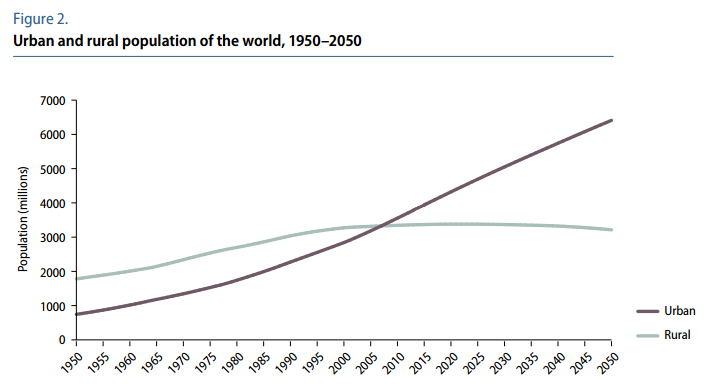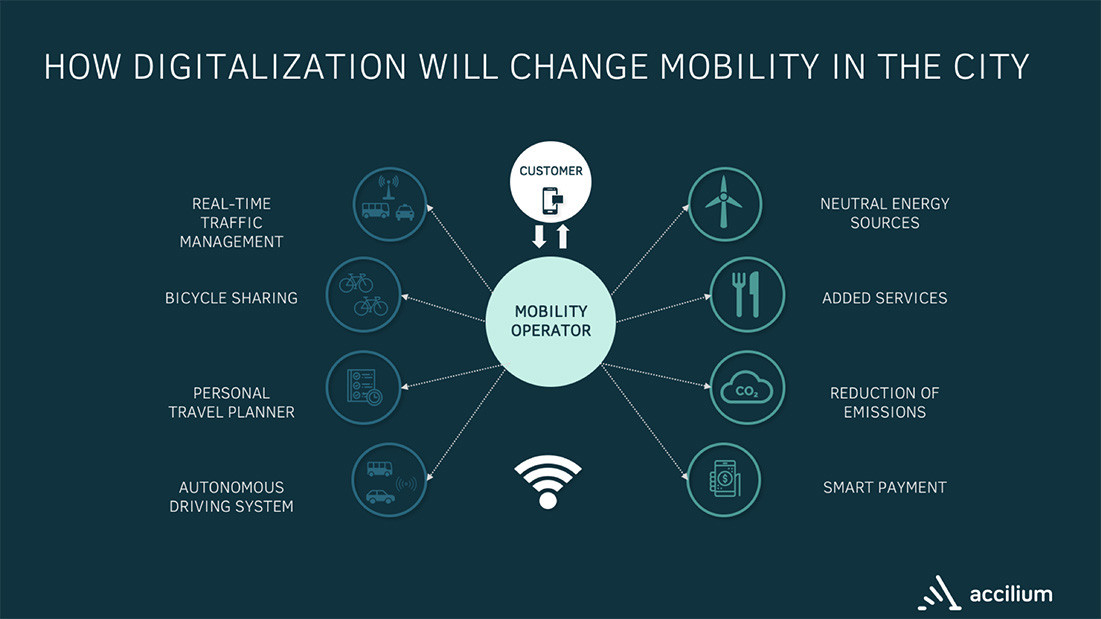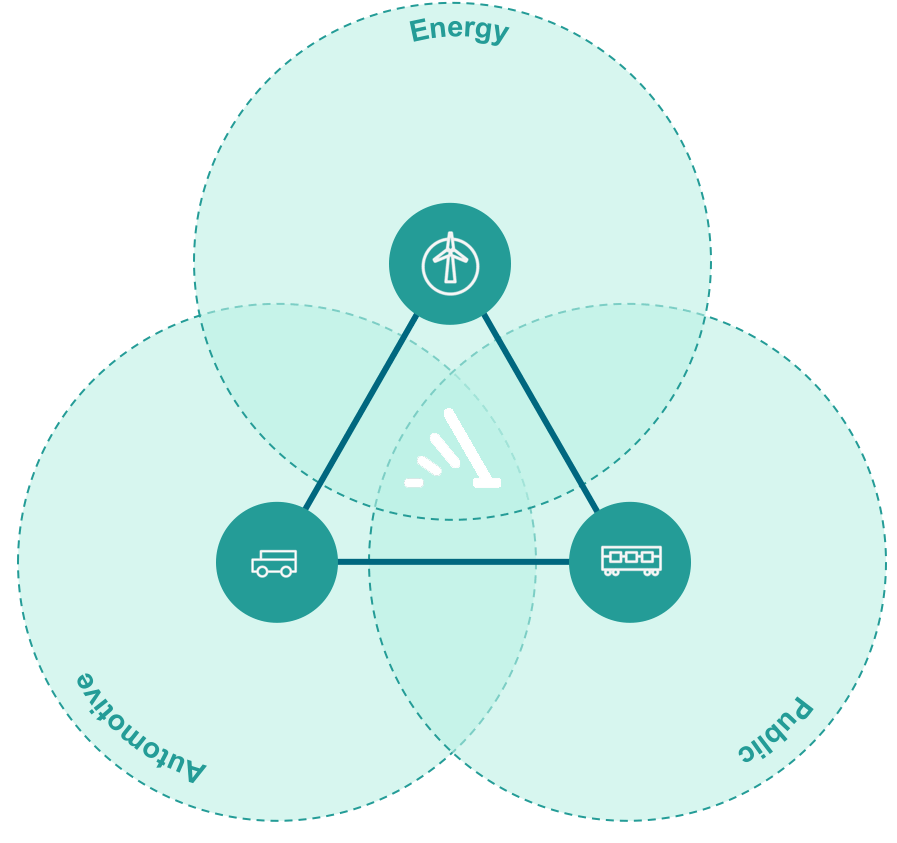The digital age is omnipresent. It fosters change in human settlement patterns, lifestyles and economic centres. The fastest evolving and most current human settlement pattern is urbanization. Urbanization is one of the primary drivers of climate change and one of the key challenges in nowadays world. It is characterized by the population shift from rural to urban areas. According to the United Nations this implies a radical increase in population (41 megacities by 2030) and an overall expansion of city areas.

How does urbanization affect urban mobility?
In spite of growing city centers, citizens want to move easily from one corner of the city to the other. Given that traffic represents the realization of mobility and makes social interaction possible at first, individual vehicles increase as well. Consequently, cities suffer of high CO2 emissions and congestion. This trend is responsible for poor air quality, overcrowded roads and an overall decreasing quality of life.
Cities set themselves the goal to combat this development. In order to do so they are rethinking mobility and looking for new solutions which are agile, sustainable and forward thinking. New mobility solutions are mainly oriented towards a reduced car ownership and an overall traffic decrease of 20%. However, due to digitalization and globalization the requirements of citizens are more demanding than ever. Their expectations need to be fulfilled by flexibility and 24h/7 availability for a reasonable price.

What concrete solutions are there already?
In Brighton & Hove the multimodal ticketing system was introduced. It gives passengers the possibility of travelling seamlessly by bus, rail or any other public transportation. By purchasing one ticket the, entire journey is covered, irrespective of changes in transport.
Vienna is trying something comparable, but on a higher level. A platform combines the mobility services of various mobility providers (including bike sharing, car sharing etc.). Thus, is able to offer customisable applications and tailor-made functions, which are supporting an operational mobility management and ensure the public transportation system in the entire urban area.
The Helsinki Region pleads for a solution, which comes very close to the concept of Vienna. It combines the options from different transport providers with value added services like deliveries for groceries or restaurant meals. For extra convenience it offers it the smartest way possible, namely into one single mobile service. Therefore, the hassle of planning and one-off payments is removed.
From these three concrete examples it is possible to derive that citizens are attracted by overarching solutions. Solutions, which suppose a functioning, cross-national cooperation between suppliers of different types of services and the city.
The challenges of public and private cross sectoral collaboration
Currently, urban areas are still dealing with the negative side effects of interdependently running businesses. Given that those companies are private players cities do not have any control over them, except if they purchase shares. On the other side, these companies would appreciate more public support to further develop their concepts.
Hence, the following effects are an oversupply of mobile applications, missing real time information and a system which is not coherent. This creates frustration amongst the population and leads citizens to choose their individual car instead of more environmental friendly means of transport.

What is necessary to break through this pattern?
The future of mobility lies not in one single field but in a combination of innovations of multiple sectors. It is necessary to overcome silo thinking and to start an interdisciplinary approach.
The alignment of the automotive sector, the public domain and the sector of energy will support the achievement of a high value proposition and will create resilience in a constantly changing system. Instead of working individually and evolving independently, cooperation will make it possible to acquire resources, competencies and new partners in an economically viable and long-term successfully way.
This type of cooperation is called Business Ecosystems (BES) and goes beyond connecting two stakeholders with each other. Unlike platforms, it aims at setting up a multilateral interrelationship between all concerned parties and interacts directly with them. Consequently, it leads to a value proposition that could not be developed by each party individually.
This multilateral interrelationship presumes a well-functioning communication and an overall mutual understanding across all sectors, hierarchies and people. Hence, a neutral orchestrator, who, despite its neutrality, speaks the same language of all three sectors, is much needed.
The role of accilium
We from accilium are ready to take over the role as an orchestrator. accilium has been founded 1,5 years ago. We are a company, which is well established in the automotive sector. Nevertheless, we are recognizing that the digital age requires to be expert in more than one industry. That is why we additionally specialized in the public domain, as well as in the sector of energy.We are aiming at strategically developing a language, which makes it possible to understand, connect and support stakeholders from all three areas.
Published by Monika Pichler, accilium
Photo credits:
https://www.weforum.org/agenda/2016/10/the-world-s-10-largest-cities-by-2030/, 09.07.2018